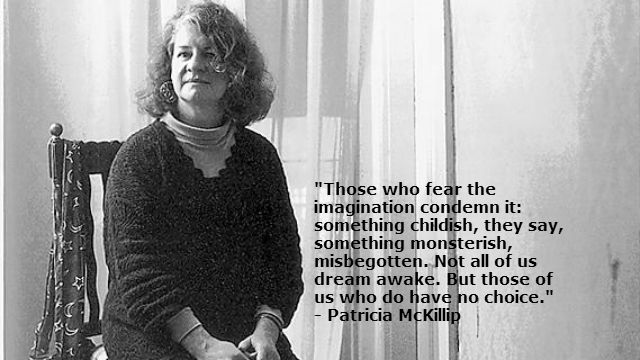Weekend Diversion: Spider Webs… on drugs?
“If I see a spider in my house, I put it in a cup, and then I take it outside. I save it. What is wrong with me?” –Jacqueline Emerson
There’s something not only incredibly useful but also beautiful about the intricate structure of a spider web. It’s such a universally admired phenomenon that it’s become a metaphor for many other things, as Welbilt sings you in their song, Spiderweb.
Dependent on the type of spider and various environmental factors, the web can take on any number of beautiful shapes.
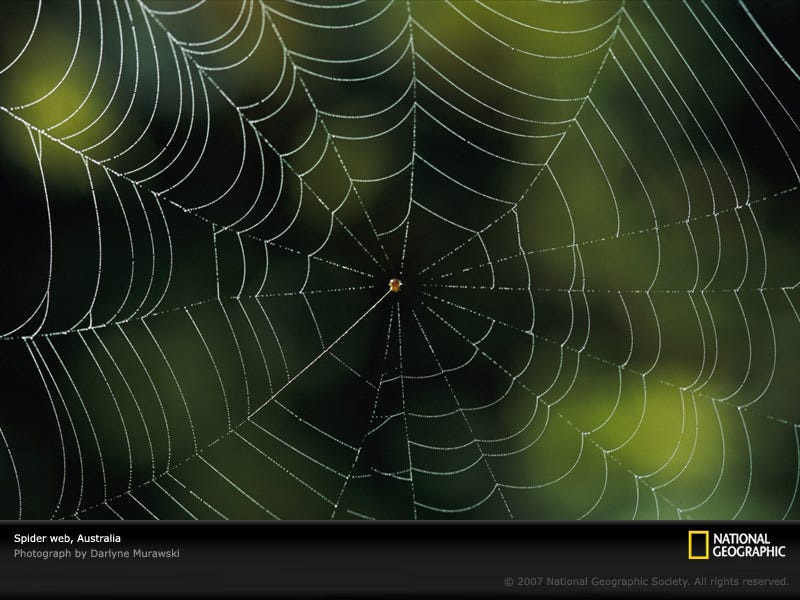
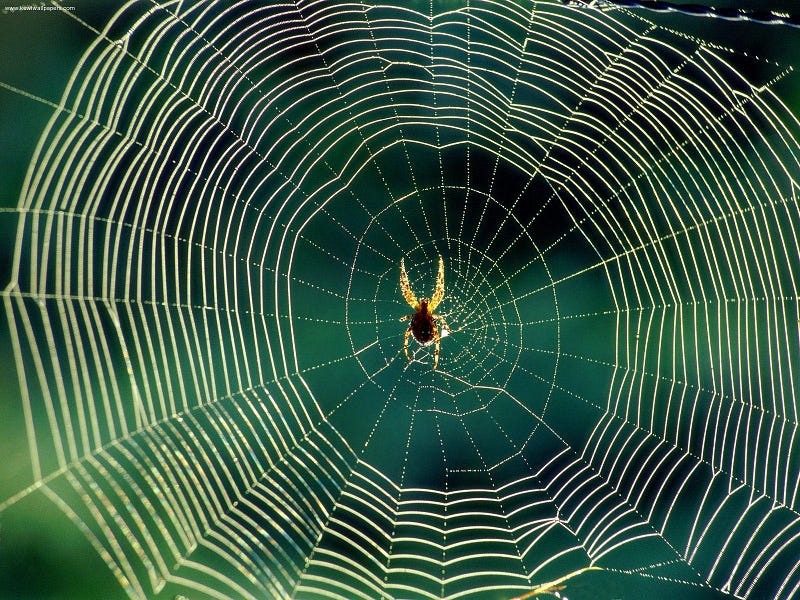
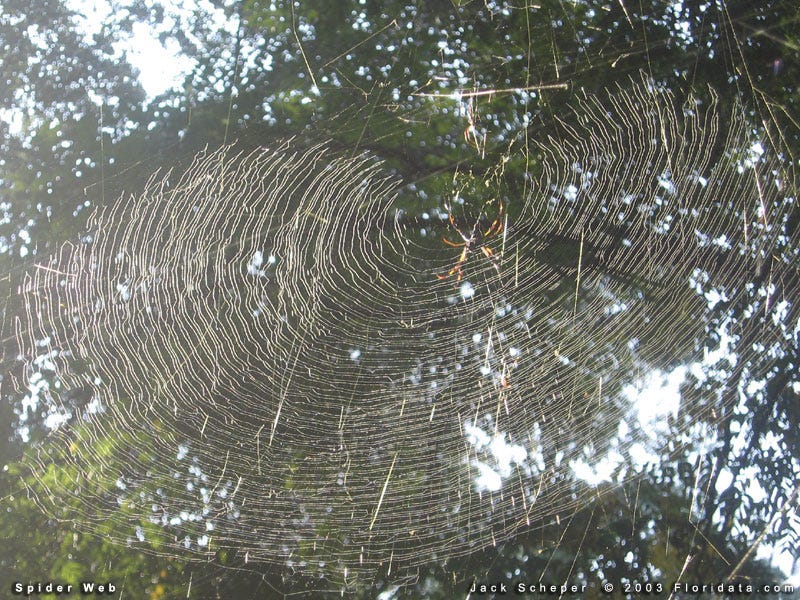
But all of that can change in a heartbeat, dependent on… how you drug the spider.
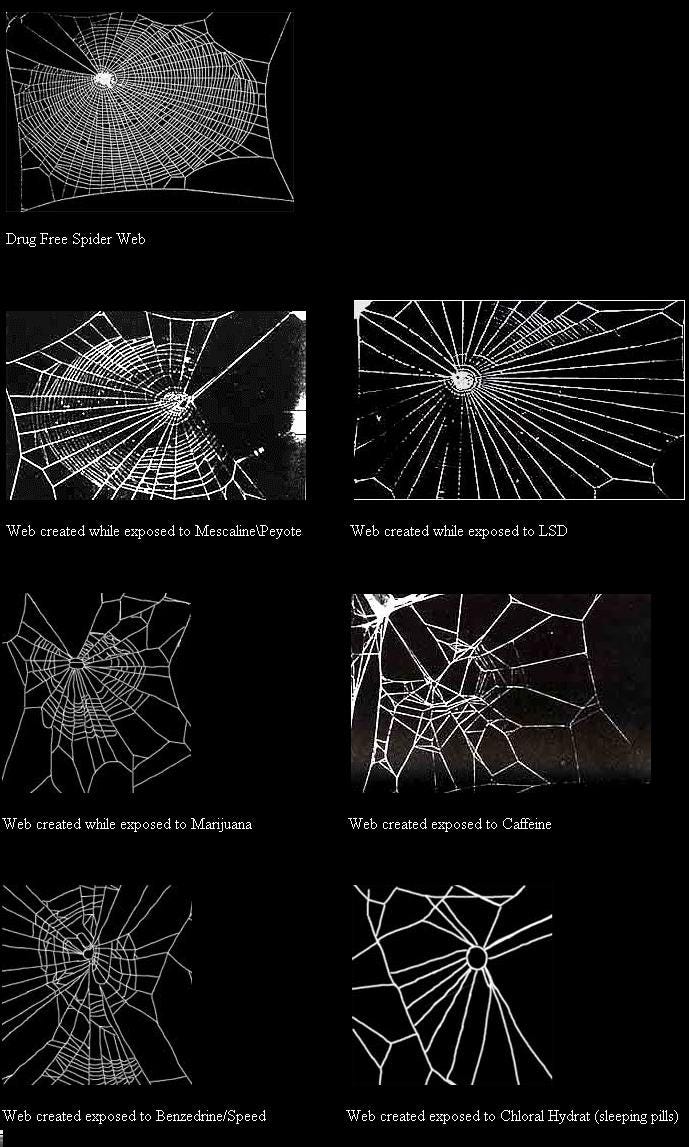
The initial motivation for such research — and this is nuts — is that a group of people were tired of running into spider webs in the morning, and so they were curious whether there was a drug cocktail you could give spiders to get them to not build a web. (The answer is no; they’ll always build one, and they’ll always build one at roughly the same hours of the night.)
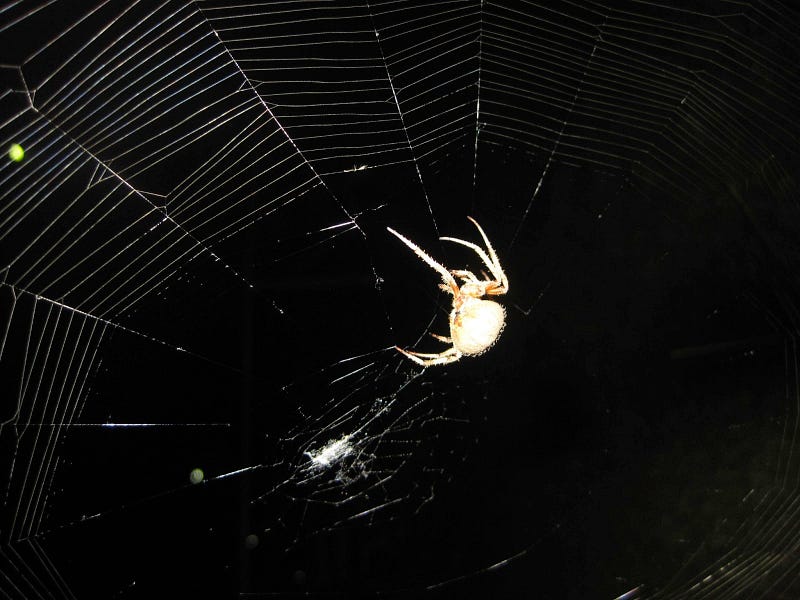
But the size and shape of the web that the spiders do build, as first determined by P.N. Witt in 1948, is severely affected by psychoactive drugs, including amphetamine, mescaline, strychnine, LSD and caffeine.
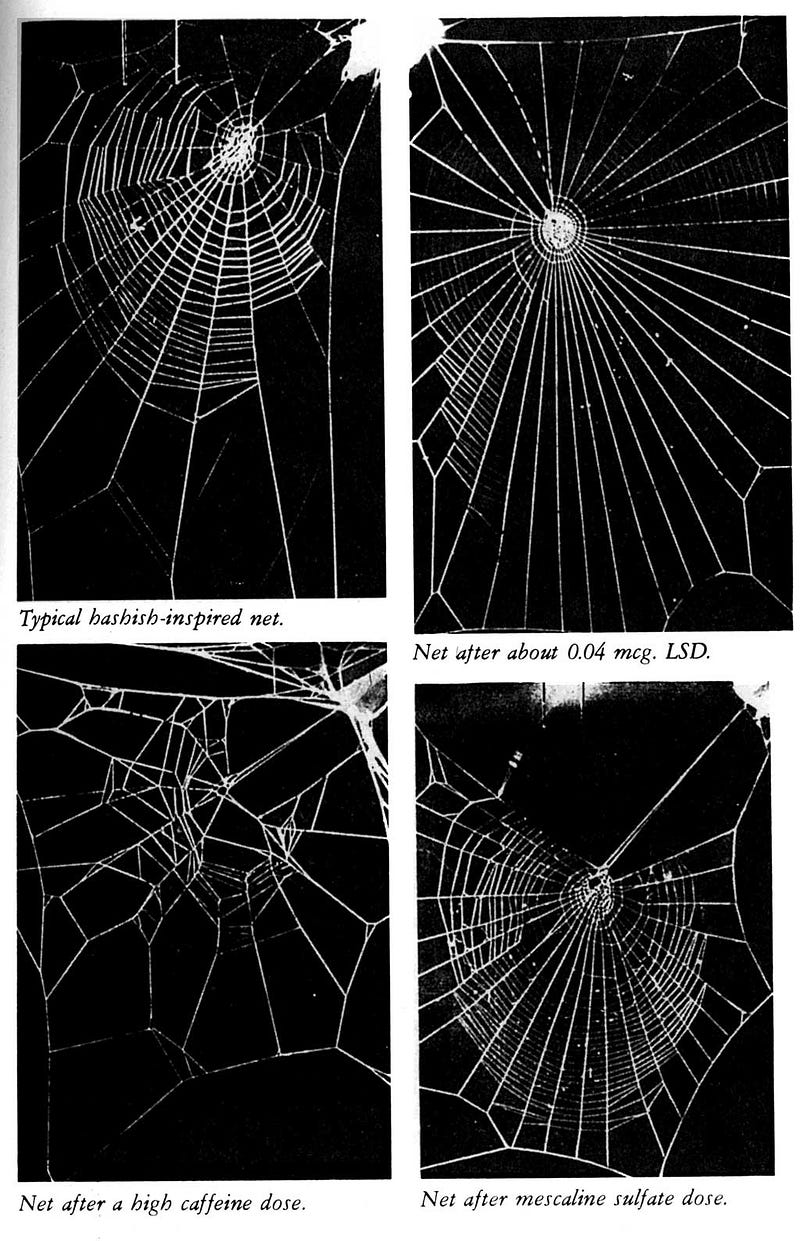
Bizarrely enough, low doses of LSD actually result in more ordered spider webs than the undrugged spiders, while higher doses (and all doses of other drugs) result in more disordered webs.

More recently, a group of NASA scientists studied the effects of a few different drugs on European garden spiders, where they discovered that they could use the spiders (and their webs) for quantitative drug detection tests!
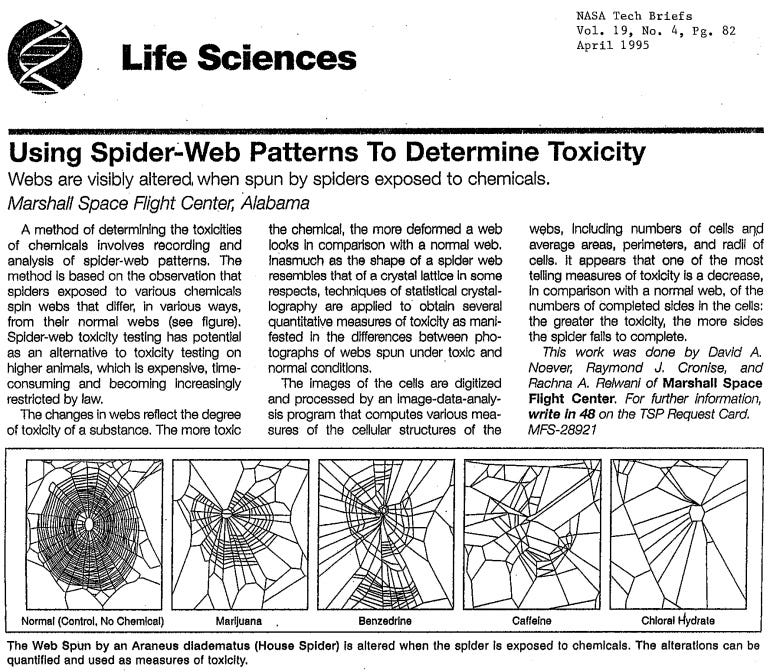
Finally, a video was made lampooning this research, and it’s just… well, you’ll have to watch for yourself.
See you back here on Monday for some real, physical science, and hope you have a great weekend until then!
An earlier version of this post originally appeared on the old Starts With A Bang blog at Scienceblogs.





